
Butterfield & Butterfield, 1979. Sale # 3063, lot № 66.
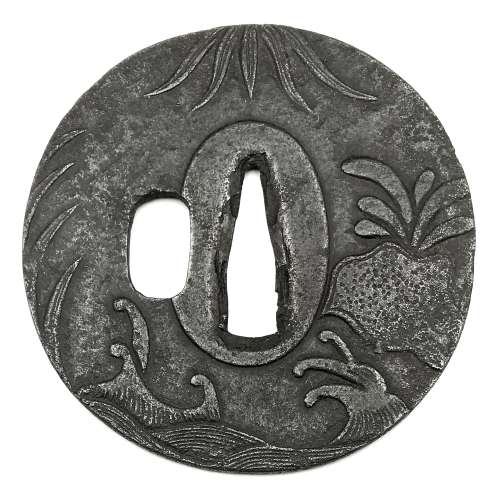

Butterfield & Butterfield, 1979. Sale # 3063, lot № 66.
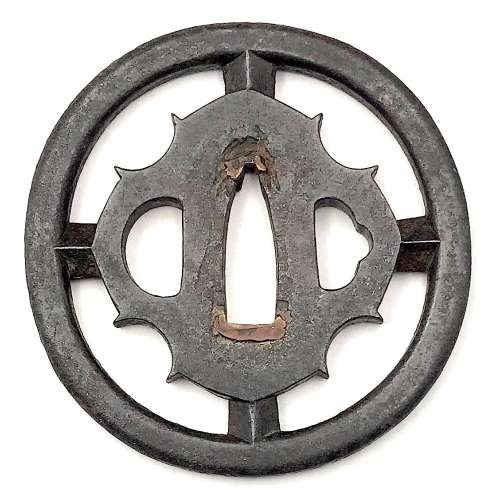
Size: 77.7 x 76.1 x 6.7 mm.
For information regarding shakoh tsuba see article 'Kirishitan Ikenie Tsuba" by Fred Geyer at Kokusai Tosogu Kai; The 2nd International Convention & Exhibition, October 18-23, 2006, pp. 84-91.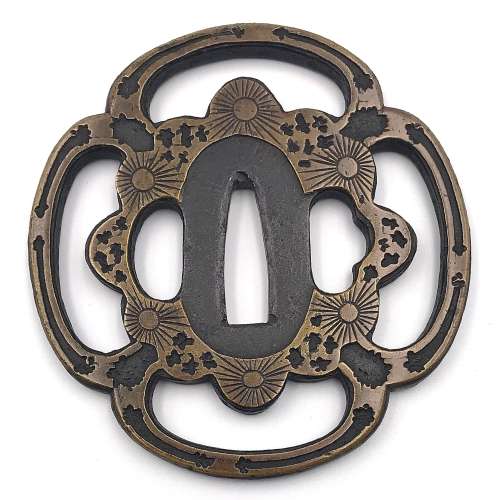
Iron tsuba of mokkō form (mokkōgata) pierced (sukashi) and inlaid with precast dark brass inlay (taka-zōgan) with somewhat abstract/geometrical design that can be liberally described as pines, mist, and snow.
Momoyama or early Edo period. End of the 16th - beginning of the 17th century. Heianjō school. Unsigned. Dimensions: 86.8 x 82.9 x 4.5 mm.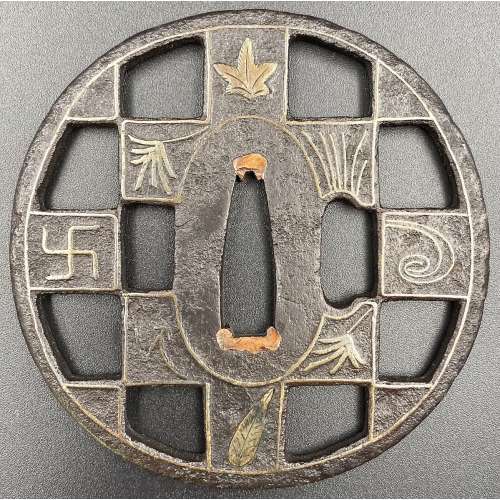
Iron tsuba of round form pierced (sukashi) in a chessboard fashion and decorated with linear (sen-zōgan) and cast (suemon-zōgan) brass inlay, including symbols of the swastika, flower-lozenge, maple leaf, pine needle, etc. on both sides; rim and openings outlined with brass inlay. Nakagō-ana plugged with copper fittings (sekigane).
Momoyama period. End of the 16th - beginning of the 17th century. Dimensions: Diameter: 75.5; Thickness: 4.5 mm.
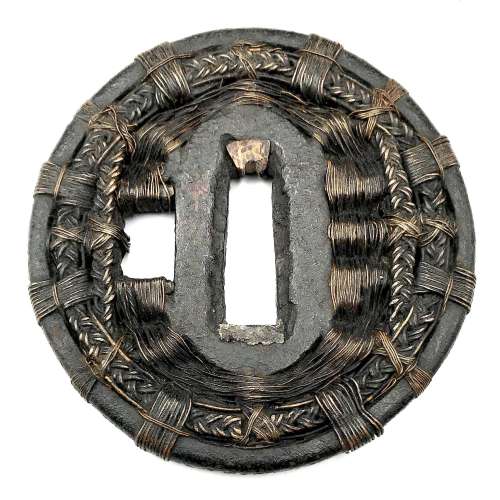
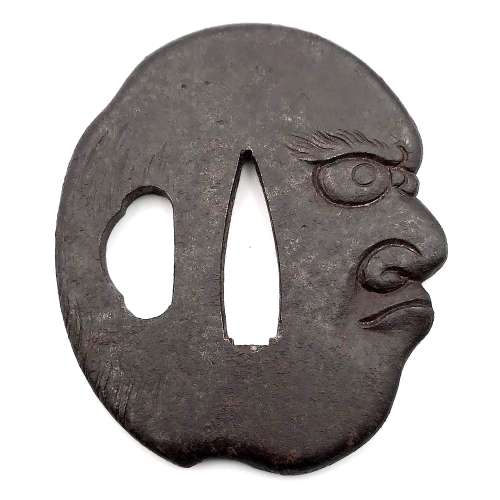

№38 Naunton Collection, 1912.

№2729 Naunton Collection, 1912.

№236 Hawkshaw Collection, 1910.
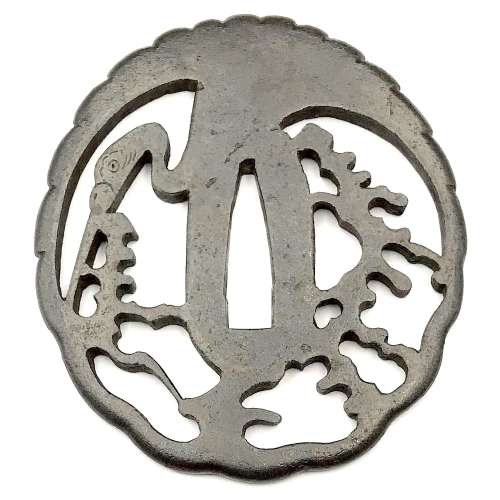
Iron tsuba of round form (tsurumaru) decorated with a design of crane and pines, or "nesting crane (sugomori-tsuru)" in openwork (sukashi). Details carved in kebori. Rounded rim.
Size: 74.7 x 69.8 x 4.8 mm.
Unsigned.
Edo period, ca. 17th century.
NBTHK Certificate № 463485. The certificate says it's a Higo School piece. The design was popular in both Akasaka and Higo schools. The Akasaka example: at Kodogu and tsuba. International collections not published in my books. (Toso Soran). Ph. D. Kazutaro Torigoye, 1978, p. 246: "Late Edo. Jiyūgata. Sined: Akasaka Tadanori saku."
Torigoye, 1978, p. 246. Late Akasaka.

Kurogane no hana, 2014, p. 69, №56. Higo tsuba.
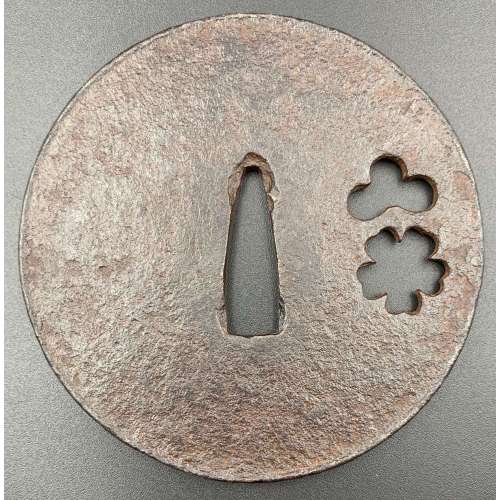
Iron tsuba with hammer marked surface and design of a plum and cherry blossoms to the right of nakaga-ana in openwork (sukashi). Raised rim, typical to katchushi school. The thickness of the plate provides for later Muromachi period making.
Late Muromachi period (1514-1573). Size: 85.8 x 85.0 x 3.6 (center), 4.1 (rim) mm; weight: 136 g.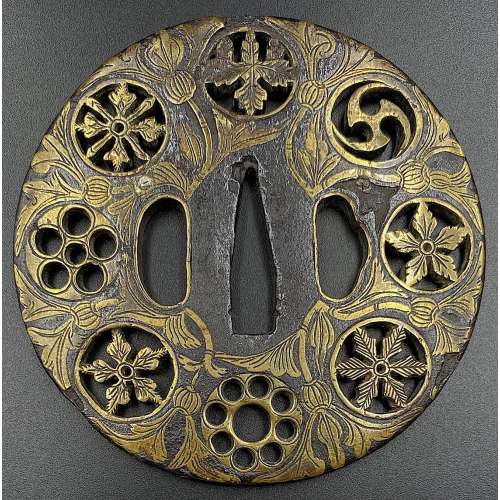
 Kiri-mon |
 Katakura-mon |
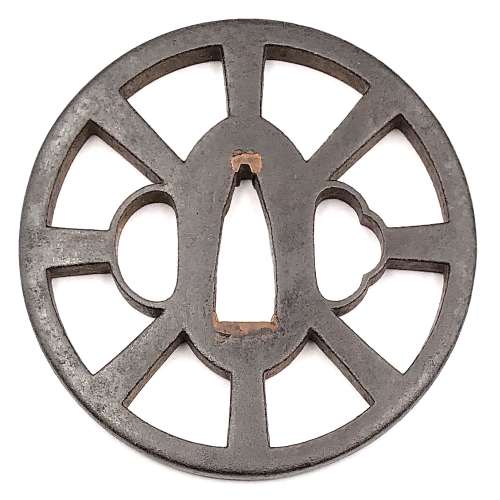
Merrily Baird in her book "Symbols of Japan" [Merrily Baird. Symbols of Japan. Thematic motifs in art and design. Rizzoli international publications, Inc., 2001] provides the following explanation of the Wheel-of-the-Law symbol: "The Wheel-of-the-Law or Golden Wheel (rimbo, kinrin) has its origins in India, where it is known as chakra. [...] In Buddhist practice, it has been represented with eight spokes, reflecting the eight-fold path to overcoming worldly desire, and it signifies that all illusions will be crushed by the faith's enlightenment. [...] The Wheel-of-the-Law is an attribute of such deities as Senju Kannon, the Thousand-Armed Kannon, and Dainichi Nyorai, the all-illuminating solar figure who is the principal deity for Shingon Buddhism. From the Edo period on, the wheel also has been used in a secular manner", e.g. on family crests.
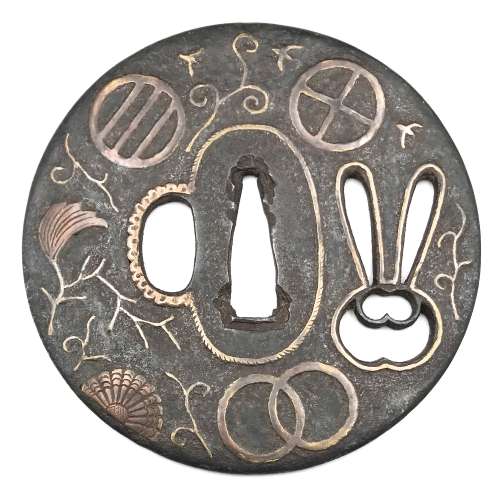
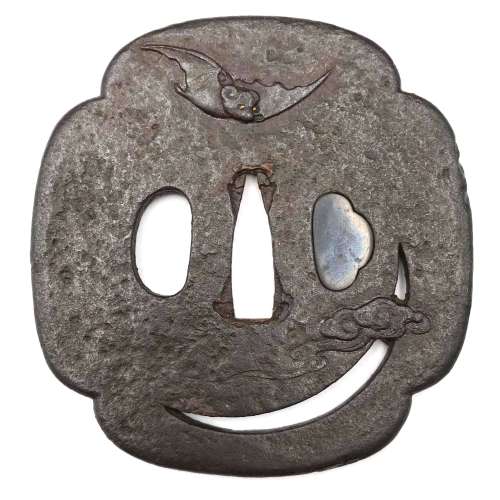
Iron tsuba of mokko form with rough surface decorated in low relief carving (sukidashi-bori) and openwork (sukashi) with a flying bat, a crescent moon, and a cloud over the moon. Bat's eyes inlaid with gold. Crescent moon and cloud on the reverse. Copper sekigane. Kogai hitsu-ana plugged with shakudō.
Unsigned.
Edo period.Size: Height: 83.7 mm; Width: 80.3 mm; Thickness: 2.9 mm; Weight: 141 g.
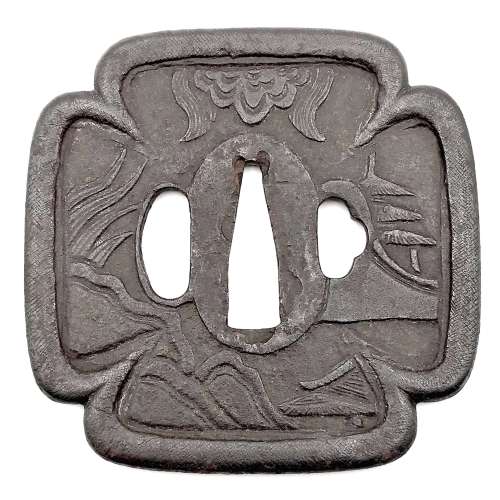

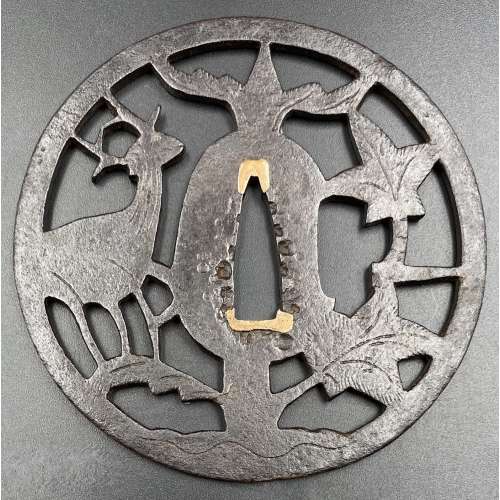
Iron tsuba of round form decorated with a deer and maple leaves in positive silhouette openwork (ji-sukashi), with details finely carved in low relief (kebori). Nakagō-ana plugged with copper fittings (sekigane). Traces of lacquer on the surface.
NBTHK: Hozon, №424947.
Design: An autumnal tsuba with an allusion to Kasuga Shrine in Nara.
Attributed by NBTHK to Shoami. Age: Probably the Momoyama period (1574 – 1603) or early Edo period (1603 – 1650), but judging on the item's substantial size (diameter 86.6 mm) and considerable thinness (3.4 mm) may be attributed to earlier times (late Muromachi period, 1514 – 1573).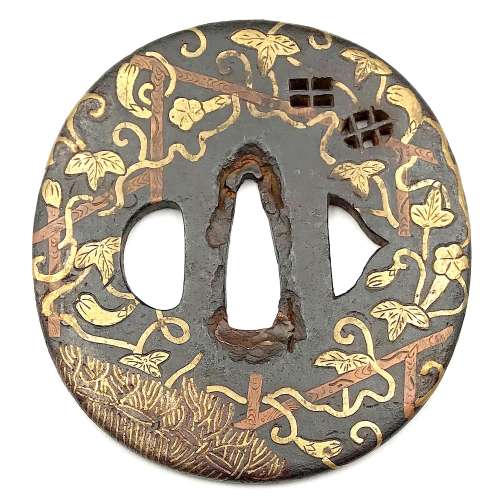
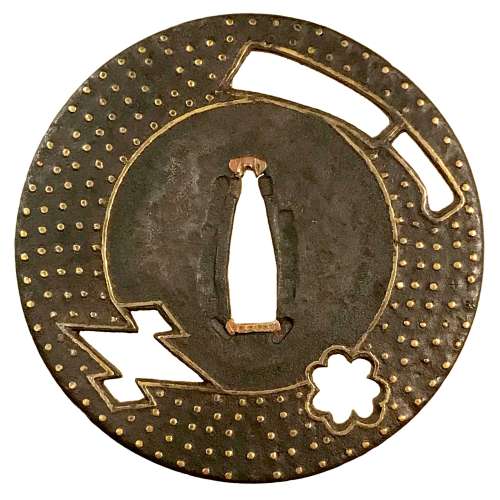
Iron tsuba of round form with design of hatchet, snowflake, and triple diamond in openwork (ko-sukashi), and inlaid with five concentric circles of brass dots (ten-zōgan) and brass inner circular line. Sukashi elements outlined in brass.
Late Muromachi period. Diameter: 82.4 mm; Thickness: 3.0 mm The triple lozenge (or diamond) is similar to the one on TSU-305 from Sasano Collection # 15. Very old motif; as Sasano remarks in his book "...represents the unstable political situation at the time".Kokusai Tosogu Kai 5th International Convention & Exhibition, October 28-30, 2009 at NEZU Museum, Tokyo, Japan, on page 83 provides the following explanation of the triple diamond symbol: "The pine bark is the form of the Diamonds, "Bishi", mon, seen from Nara period, found on cloth stored in the Shoso In, and used primarily by the Takeda family. The form of Bishi mon [similar to ours] is called "Chu Kage Matsukawa Bishi", (Middle Shaded Pine Bark Diamond)."
A combination of hatchet (usually an axe) and a triple diamond (Matsukawabishi) alludes to the Nō play Hachi-no-ki (ref: Iron tsuba. The works of the exhibition "Kurogane no hana", The Japanese Sword Museum, 2014; AND Sasano: Japanese Sword Guard Masterpieces from the Sasano Collection. By Sasano Masayuki. Part One. Published in Japan in 1994.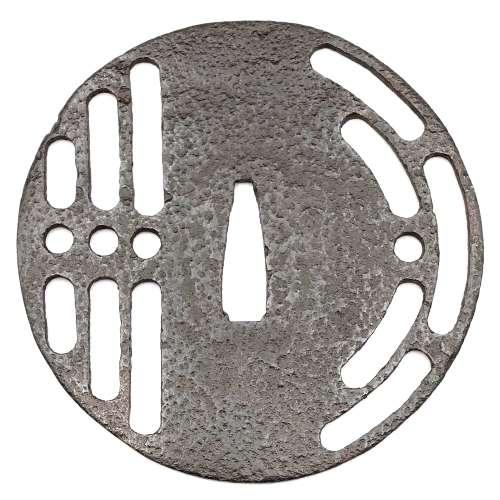
"Traditionally the old iron plate tsuba are classified into Ko Tosho (old sword smith), and Ko Katchushi (old armor maker) styles. It is sometimes difficult to justify attribution of a given tsuba to the Tosho or Katchushi category. Generally guards with raised rims or relatively complex designs tend to be assigned to Katchushi. This is basically a convention we follow out of habit and convenience." [...] "In Token Kai-Shi part six, Articles by Akiyama Kyusaku, Robert Haynes comments: "…from 1300 to 1400 over 150,000 MOUNTED swords were made in Japan for export alone. This means that over four tsuba a day were made for 100 years. This would mean that at least 3000 persons were making nothing but tsuba, let alone all the other fittings needed to complete these swords. With sword smiths, fittings makers and all the other artists need to complete a sword for export, at least 10,000 sword artists were working together, in any one of these hundred years."Another tsuba of similar design, Tōshō school, is illustrated in this collection; see TSU-0319.2015.
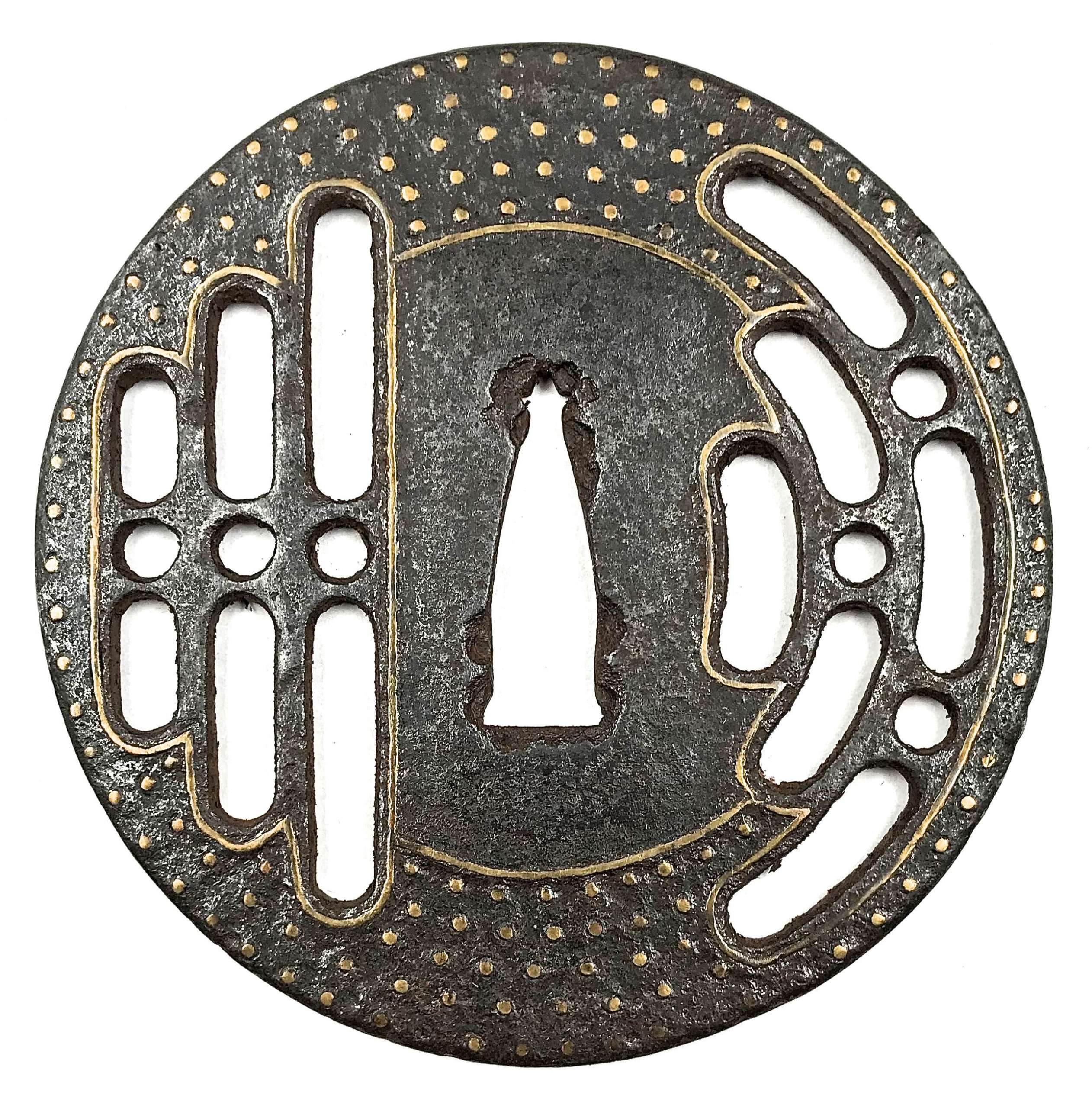 Reference to this design can be found in LIB-1359.2017 Japanese Swords and Tsuba from the Professor A. Z. Freeman and the Phyllis Sharpe Memorial collections, Sotheby's, London, Thursday 10 April 1997; p. 18-19, lot № 37: "A Kamakura-bori Tsuba, Momoyama Period. ...pierced with two large formalised butterflies..."
Reference to this design can be found in LIB-1359.2017 Japanese Swords and Tsuba from the Professor A. Z. Freeman and the Phyllis Sharpe Memorial collections, Sotheby's, London, Thursday 10 April 1997; p. 18-19, lot № 37: "A Kamakura-bori Tsuba, Momoyama Period. ...pierced with two large formalised butterflies..."
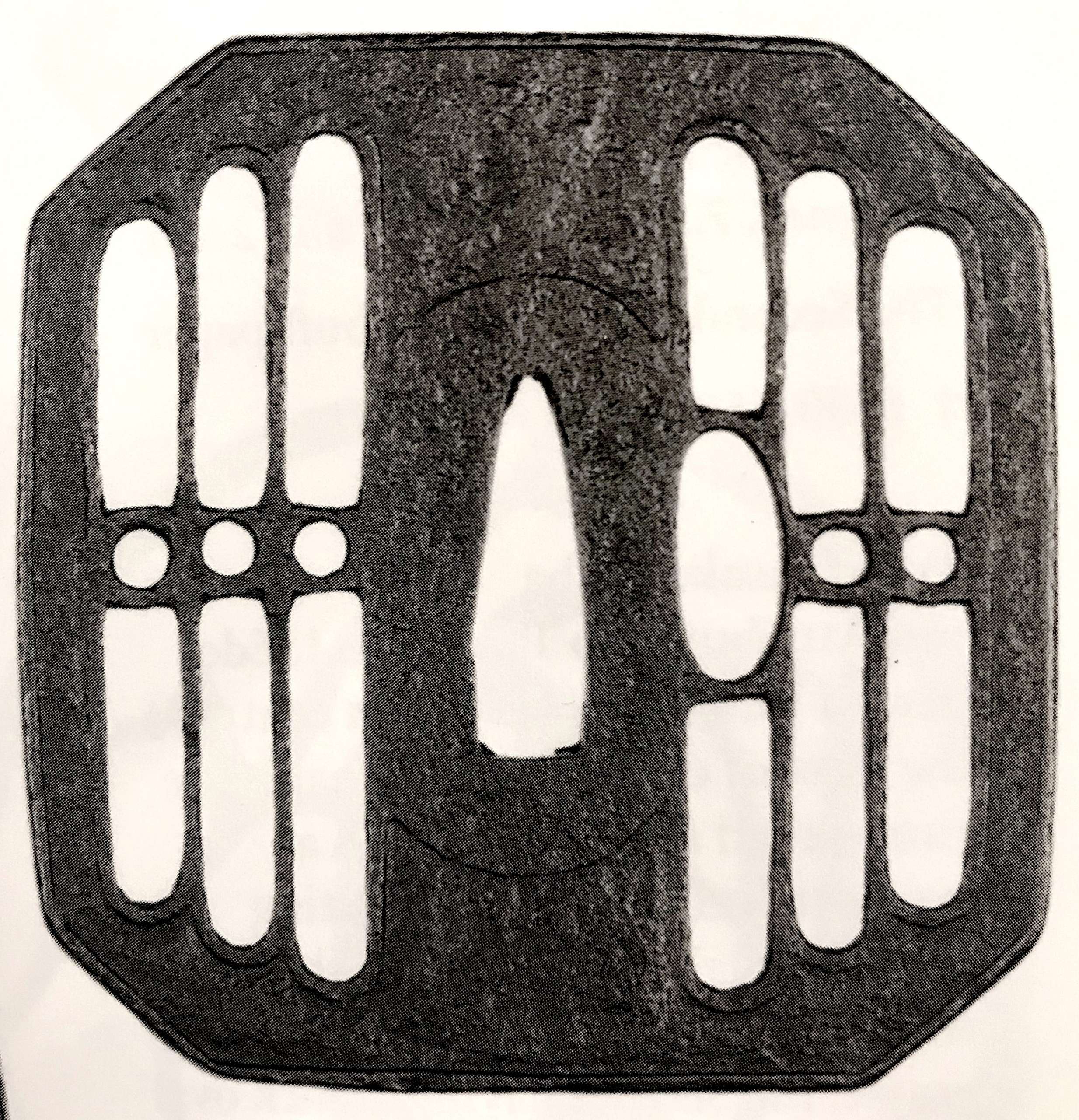
A Kamakura-bori tsuba of octagonal form, Momoyama period.